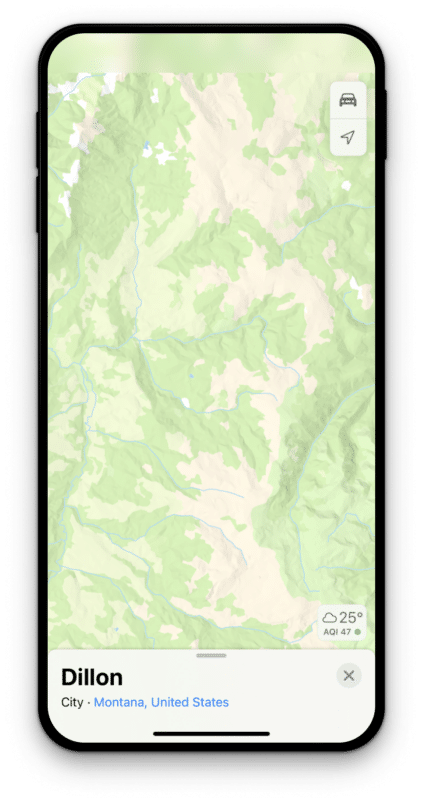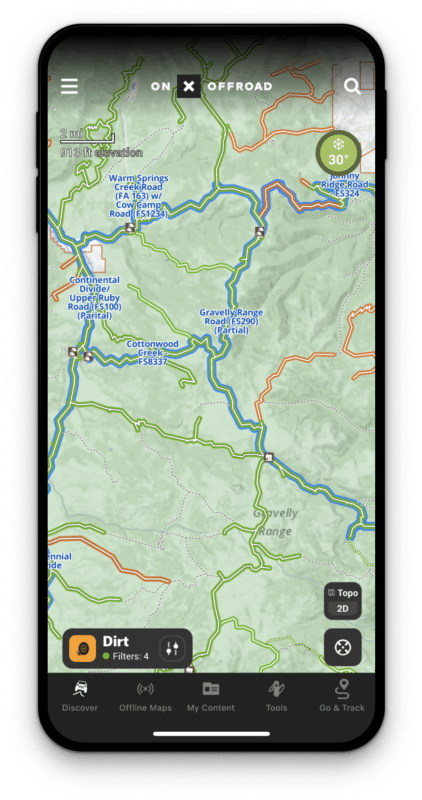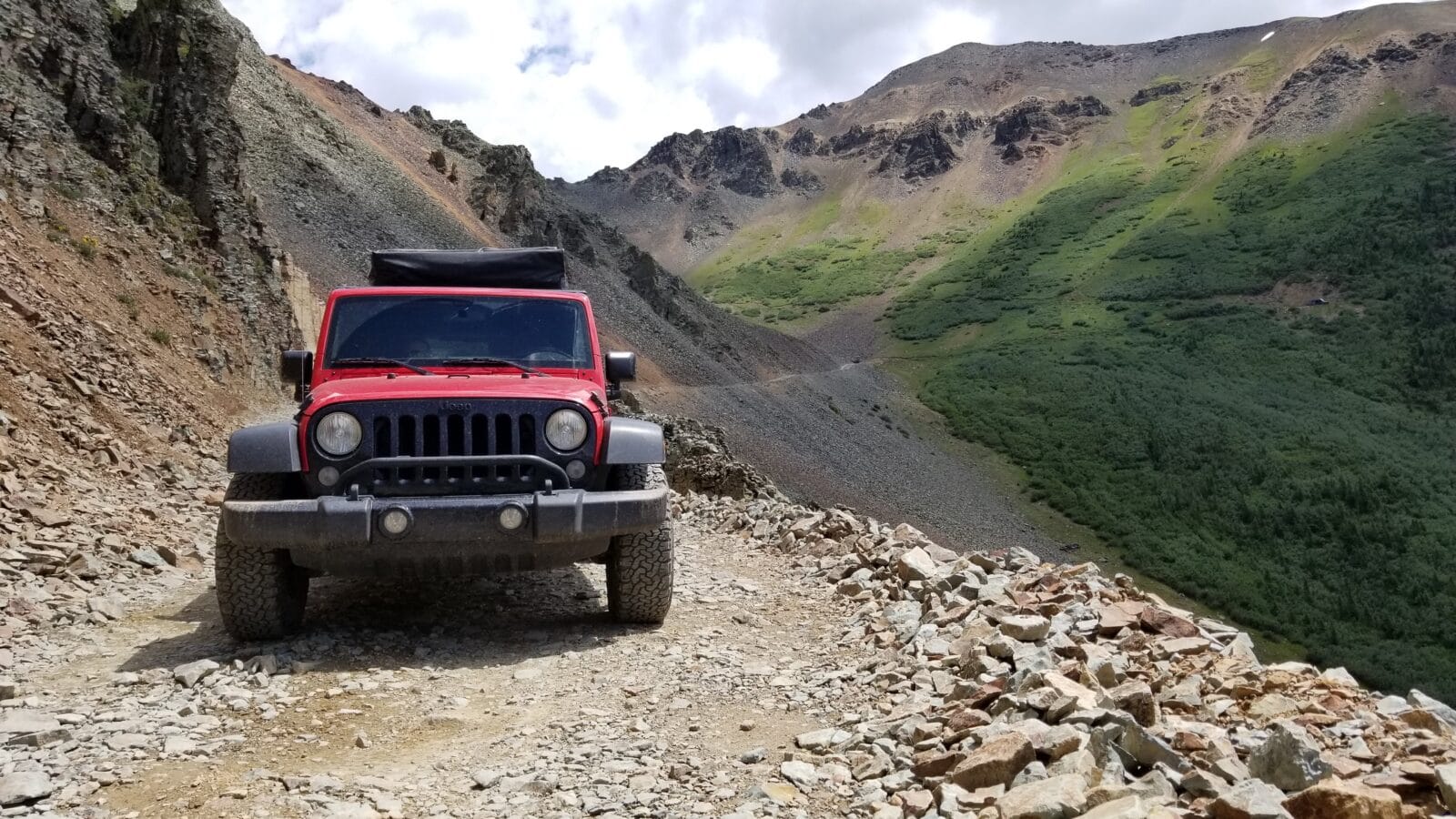Off-Roading For Beginners
The pavement just not cutting it anymore? We hear you. Exploring high mountain roads, zipping a SxS around a sand dune, or brapping a dirt bike down a single track make some of the best adventures out there. New to off-roading? We have tips and advice on how to get started, whether you’re looking to take a truck on the back roads to an awesome waterfall or you’re thinking about buying your first dirt bike or ATV.
Here are top four things to think about as you get into off-roading:
- Map — Know where you’re going. We mean it.
- Gear — Pack for the terrain and sport.
- Buddies — Don’t go alone.
- Vehicle — Two wheels? Four? They’re all fun.
You read that right: the type of vehicle you choose is last on our list. Almost any vehicle can navigate some type of dirt road. (Read more on understanding technical ratings here.) While rock crawlers and dune buggies are fun—okay, really fun—don’t let the vehicle get in your way of going off-roading. I once rallied the backroads of Montana in a beat-up old pink Cadillac. It can be done.
How To Find Beginner Off-Road Trails Near You
No matter the terrain, or your experience level, know where you’re going. Don’t listen to your buddy who says, “Oh yeah, all the roads connect somehow.” Before you know it, it’s dark, you’re navigating a road next to a steep drop-off, and you’re almost out of gas.
There are paper maps published by national forests, counties, and off-road clubs that can be easily thrown in the glove box. The downside is that these get wet, torn, and become quickly out of date with each passing season.
Your best bet is to invest in a digital map, but don’t rely on your phone’s stock mapping app. The below images are the exact same location.
Without onX Offroad

With onX Offroad

onX Offroad has thousands of off-road trails for every vehicle type—full-width trucks, dirt bikes, ATVs, SxS—and the information is constantly updated. Tap any trail or road for detailed information. The best part for beginners is being able to filter trails and roads by your vehicle type, and being able to quickly see what’s closed and what’s open. Green is open and ready to go. Red is temporarily closed. And blue is Featured Trail with photos, trail descriptions, difficulty rating, and more details available.
If you’re just getting into off-roading, download onX Offroad onto your phone, throw it in your pocket, and have the peace of mind that you’ll be able to explore with confidence and get home safely. Be even more prepared with Offline Maps. Take 30 seconds to download your area before you go and you’ll have full access to the interactive map, even without cell service. Featured Trails also provide miles and estimated duration, so you can plan fuel (and food) stops accordingly.
What to Pack Off-Roading
Off-roading can be dirty, dusty, bumpy, hot, cold, and a wild ride—what could be better? But all those elements can make packing tricky. If you’re behind the wheel on your first off-road excursion, or just learning how to drive a SxS or ride a dirt bike, here are a few essentials we recommend:
- Map — Yep, we’re saying it again. Don’t leave home without it. Skip the clunky books and big maps and throw onX Offroad on your phone and in your vehicle’s dash. Check out these beginner off-road trail maps to get started.
- Lights — If you’re just starting out you may not have the aftermarket light pods or bars, and that’s okay. Pack a couple of bright flashlights as well as a headlamp in case you get stuck or need to change a tire after the sun goes down.
- Spare Tire and Jack— Pack a full-size tire. You will thank yourself. And don’t forget the jack and tire iron.
- Food and Water — Pack extra food in case you get stuck or you have hangry friends. Throw a box of energy bars in the glove box and a few gallons of water in the back.
- Extra Clothes — Rain can come without warning and the desert has serious mood swings. In decent weather pack an extra midlayer and a raincoat. In the winter, don’t take any risks and pack what you would need to sleep on the trail, just in case.
- First Aid Kit — In addition to the essentials, make sure to have Tylenol for fevers, Benadryl for allergic reactions, and emergency blankets.
View our whole list of off-roading essentials here
Off-Roading With Friends
Never travel alone, especially as a beginner. You may be a road warrior or an extreme athlete, but you will be up creek if you get a flat tire 30 miles from civilization. If you’re the driver, then assign a trusted friend as your co-pilot. They will be navigating and helping you watch out for potential obstacles. Throw a couple of friends in the back because, let’s face it, off-roading with a crew is more fun.

How to Choose an Off-Road Vehicle
The big question: which off-road vehicle should you try? If you’ve caught the off-road bug then chances are that you’ve been introduced in some way. Maybe you went on a Moab trail ride or watched the racers at The Mint 400 or King of the Hammers. Whatever it is, find a vehicle that fits your budget, the trails and/or roads you want to explore, and your comfort level.
How to decide? For me, I had been driving Montana’s mountainous roads in a truck for most of my life and I wanted to try something new. I wanted to explore trails narrower than full-width but I didn’t have a big budget. I decided to buy a dirt bike because I could take it out with one or 10 friends, it was relatively easy to learn (watch out for that whiskey throttle!), and I landed a great beginner bike for $1,200.
You can certainly have a good time with a brand new SxS or rock crawler, but you can also slowly build your off-road vehicle over time. Talk to your local shops about tires, lifts, lights, head units, and more. It’s a fun way to get to know your vehicle really well and make friends with the people who probably know the trails better than anybody (well, except onX Offroad).
Try onX Offroad for free for 7 days.